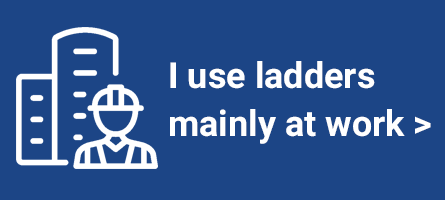Ladder Association training courses
Whether you use ladders regularly at work, or you're an occasional ladder-using DIYer at home, you should be trained to know how to use ladders safely.
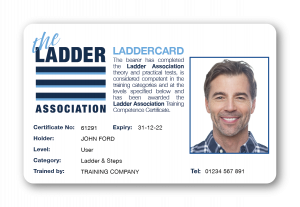
It might sound strange to some people to think they need to be trained to use a ladder. They’re simple, right?
Yes, on the face of it they are. And they can be a sensible and practical solution for low risk and short duration work at height.
Although ladders are fairly simple pieces of work equipment, you must still be ‘competent’ to use them, whether at work or at home. That’s because you’re working at height, which always carries risks, and it’s important you know how to do it safely.
Ladder Association training is about more than just using the ladder; it’s about understanding when it’s right to use a ladder (and when it’s not!), choosing the right ladder and then understanding the simple steps to take to use the ladder safely.
Let’s explore your options…
Which best describes you?
Or, jump straight to learn more about each course...
Ladders at work
Falls from height - in general
Falls from height remain the most common kind of workplace fatality, accounting for around a quarter of all worker deaths and 8% of all non-fatal injuries every year.
Latest workplace accident statistics from the Health and Safety Executive (HSE) show that in 2022-23 falls from height (all falls, not just ladders) resulted in 40 fatalities¹, up to 33,000 injuries², over 992,000 working days lost³, and estimated cost to Great Britain of over £847million4.

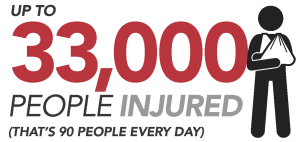
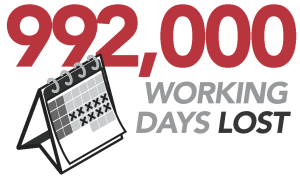

Ladder use at work
With many fall from height incidents at work involving a fall off a ladder, it’s essential that people use the right type of ladder for the specific task and know how to use it safely.
To use a ladder, you must be competent or, if you are being trained, you should be working under the supervision of a competent person. Competence can be demonstrated through a combination of training, practical and theoretical knowledge, and experience.
Training should be appropriate for the task, and this includes knowing:
• HOW to assess the risks of using a ladder for a particular task;
• WHEN it is right to use a ladder (and when it is not);
• WHICH type of ladder to use and how to use it.
Looking for more guidance? ‘LA455 Safe Use of Ladders and Stepladders – a brief guide’ is the latest guidance jointly produced by the Ladder Association and HSE.
Ladders and stepladders are not banned under health and safety law.
In fact they can be a sensible and practical option for low-risk, short-duration tasks,
although they should not automatically be your first choice.

Recommended courses for the WORK user:
The full suite of accredited Ladder Association training courses are suitable for ladder use at work.
From ladder users and those who inspect ladders in the workplace, to managers who need to know what ‘good’ looks like – there’s a Ladder Association training course suited to all workers.
Ladders at home
Accidents do happen - but they can be avoided
Sadly, accidents at home involving a ladder do happen.
Sometimes it’s due to faulty or inappropriate equipment, sometimes poor conditions (bad weather, uneven ground), and sometimes misuse (over-reaching, not maintaining three points of contact).
Whatever the cause, each statistic represents a real person who may have suffered life-changing injuries after falling from a ladder.
It is important you are aware of these incidents and take proper precautions to prevent something similar happening to you.
Hospital admission data from NHS England, NHS Wales and Public Health Scotland shows that between 2014/15 and 2021/225:







Recommended courses for the HOME user:
Not all accredited Ladder Association training courses are necessarily suited to the home ladder user.
For example, home users would benefit most from attending a ladder user and/or inspection course. Or, perhaps you’re a volunteer in your local community centre or church, then the steps and stools course for lower level steps and stepladders would be an ideal option.
Explore our range of courses...
If you use ladders and stepladders, this course is for you! You’ll learn when it’s right to use a ladder (and when it’s not), and how to use, store and handle them safely.
What's covered?
• Current Legislation, Regulations & Guidance
• Roles & Responsibilities of Employers & Employees
• Equipment – Leaning Ladders, Stepladders & Combination Ladders
• STEP methodology
> Site
> Task
> Equipment
> People
• Pre-Use Checks
• Storage, Transportation & Maintenance
• Personal Hazards


Employers need to ensure ladders are in a safe condition before use, and that regular inspections are carried out by a competent person. This course is designed for any person whose duty it is to inspect and maintain ladders at work.
What's covered?
• Current Legislation, Regulations & Guidance
• Roles & Responsibilities of Employers & Employees
• Formal Inspections of Ladders & Stepladders
> Inspection Procedure
> Carrying Out an Inspection
> Frequency of Inspections
> Recording Inspections
> Advice on Repairs & Disposal Procedures
• Personal Hazards
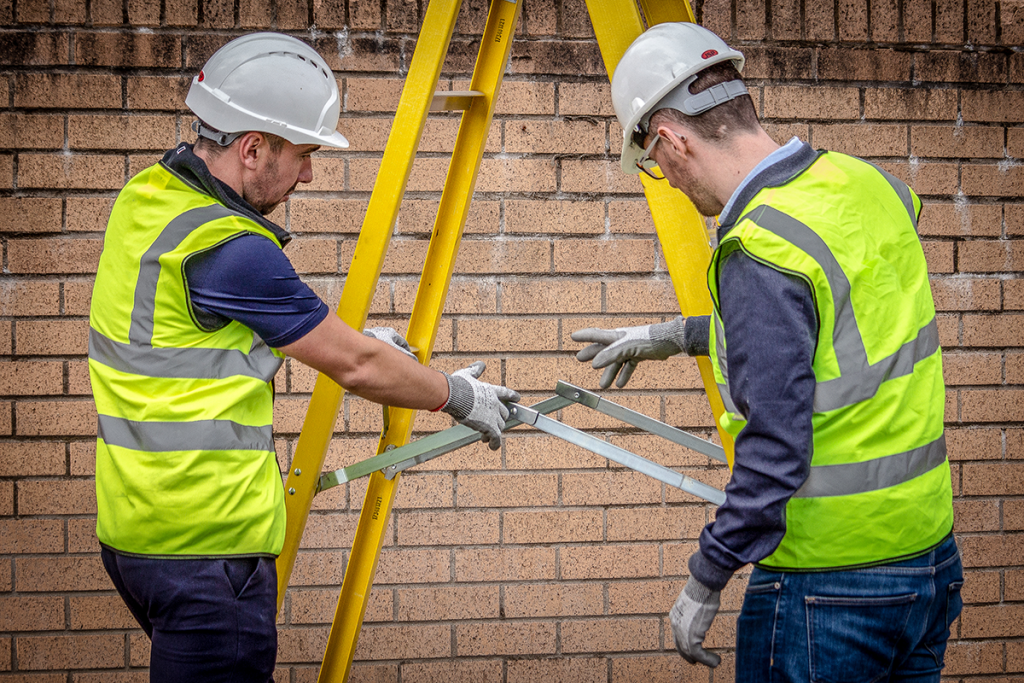

This full day course brings together the guidance on safe use of ladders and stepladders, with an additional module on ladder inspection, and is designed for any person whose duty it is to use, formally inspect and maintain ladders at work.
What's covered?
• Current Legislation, Regulations & Guidance
• Roles & Responsibilities of Employers & Employees
• Equipment – Leaning, Combination, Multi Hinged and Telescopic Ladders, plus Stepladders
• Site > Task > Equipment > People
• Pre-Use Checks
• Formal Inspections of Ladders & Stepladders
> Inspection Procedure
> Carrying Out an Inspection
> Frequency of Inspections
> Recording Inspections
> Advice on Repairs & Disposal Procedures
• Personal Hazards


This course has been specifically developed for managers and supervisors to help you properly plan and organise work at height using ladders and stepladders.
What's covered?
• Current Legislation, Regulations & Guidance
• Managers’ Roles & Responsibilities
• Risk Assessment / Emergency & Rescue Plans
• Equipment
• Site > Task > Equipment > People
• Storage, Transportation & Maintenance
• Inspection of Ladders & Stepladders
• Behavioural Competencies
• Personal Hazards
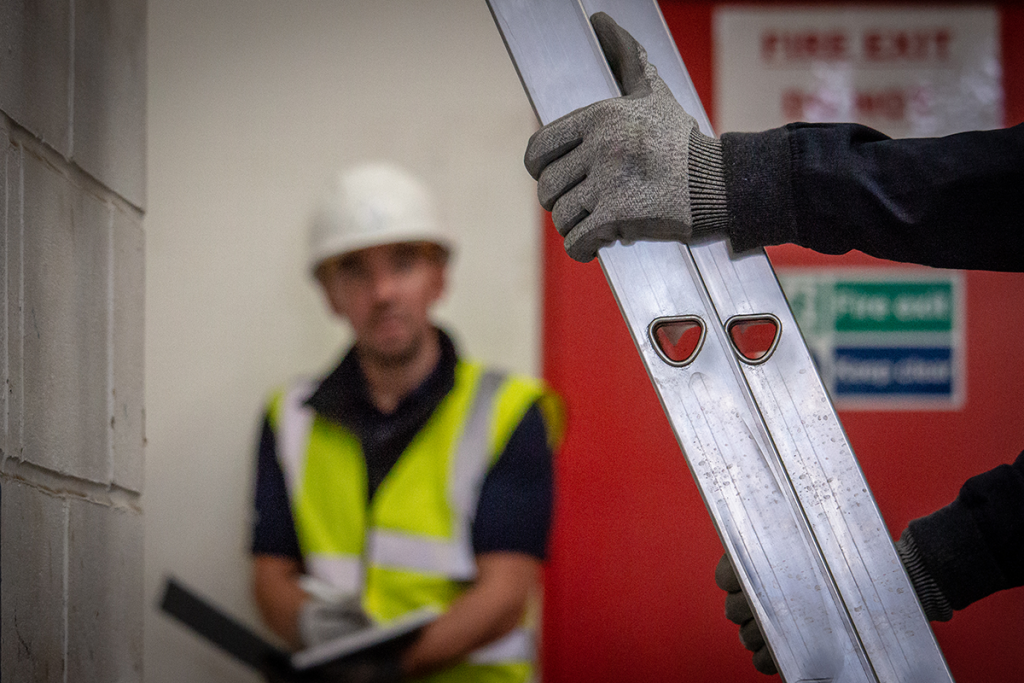

This course is suitable for users of stepladders and step stools in places like shops, offices, schools, libraries and the healthcare sector.
What's covered?
• Current Legislation, Regulations & Guidance
• Roles & Responsibilities of Employers & Employees
• Equipment – Stepladders, Platform Stepladders and Stepstools
• STEP methodology
> Site
> Task
> Equipment
> People
• Pre-Use Checks
• Storage, Transportation & Maintenance
• Personal Hazards


This course is suitable for those people responsible for inspecting stepladders and step stools.
What's covered?
• Current Legislation, Regulations & Guidance
• Roles & Responsibilities of Employers & Employees
• Formal Inspections of Stepladders and Step Stools
> Inspection Procedure
> Carrying Out an Inspection
> Frequency of Inspections
> Recording Inspections
> Advice on Repairs & Disposal Procedures
• Personal Hazards


This course is suitable for those people responsible for using and inspecting stepladders and step stools.
What's covered?
• Current Legislation, Regulations & Guidance
• Roles & Responsibilities of Employers & Employees
• Equipment – Stepladders, Platform Stepladders and Step Stools
• STEP methodology
> Site
> Task
> Equipment
> People
• Pre-Use Checks
• Formal Inspections of Stepladders and Step Stools
> Inspection Procedure
> Carrying Out an Inspection
> Frequency of Inspections
> Recording Inspections
> Advice on Repairs & Disposal Procedures
• Storage, Transportation & Maintenance
• Personal Hazards


Why accredited Ladder Association training?
The Ladder Association administers the leading ‘LadderCard’ ladder safety training scheme through our network of approved training centres. Together, our centres train over 15,000 people each year to use, inspect and manage ladders safely.
Our training centres must meet a demanding set of quality criteria to first join, and then remain, as approved Ladder Association training centres. Their instructors, premises, facilities, course materials and equipment are all vetted. Approved Ladder Association training centres are then subject to ongoing audit to ensure they continue to meet the high standards we expect.
Accredited Ladder Association training courses are internationally-recognised qualifications, delivered to a consistent standard, by qualified instructors with specialised ladder knowledge. You can be guaranteed to receive the correct and current ladder safety information when you book an accredited course through a Ladder Association training centre.
Other useful information
Every day, all across the world, people in all sorts of industries, and at home, use ladders. The Ladder Association is here to help you do it safely. Our goal is to make sure everyone who climbs a ladder goes home safely.
To guarantee you receive industry-recognised ladder training, delivered via our network of approved and audited training centres, and to buy or hire safe and compliant ladders, speak to your nearest Ladder Association member today!
Data sources:
¹ RIDDOR – Kind of accident statistic in Great Britain, 2023
² / ³ Labour Force Survey
4 HSE Costs to Britain Model
5 NHS England – Hospital Episode Statistics (HES): https://digital.nhs.uk/data-and-information/data-tools-and-services/data-services/hospital-episode-statistics. NHS Wales Informatics Service, PEDW Statistics – 2014-2022. Public Health Scotland – IR2023-00534: Number of emergency admissions in Scotland due to falls on/from a ladder (January 2011 – December 2022)





